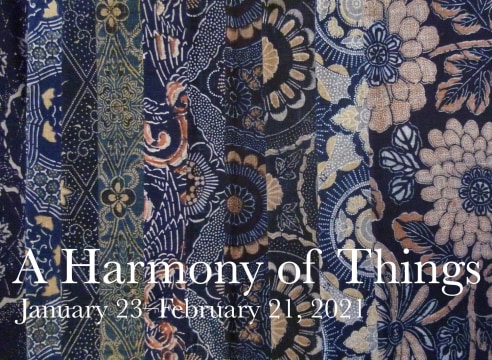
Katazome
Katazome is a resist dye technique in which a paste of rice flour and bran is applied to cloth through a hand cut paper stencil: dye will not penetrate the areas on the cloth where the paste has been applied, thus creating a pattern.
Dyes can be applied using an immersion method, by hand tinting, or by a combination of these applications, depending on the complexity of the desired effect. If the cloth is to be seen from both sides or if the artisan would like to achieve a crisp, high-contrast effect to the pattern, the application of rice paste through a stencil is applied to both sides of a cloth, requiring an amazing technical skill for exact registration of the stencil on front and back.